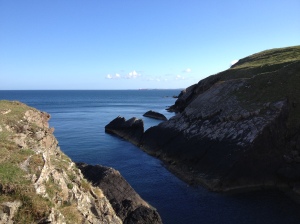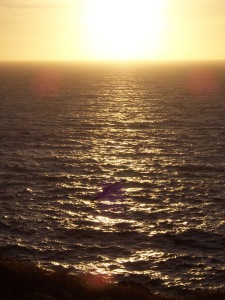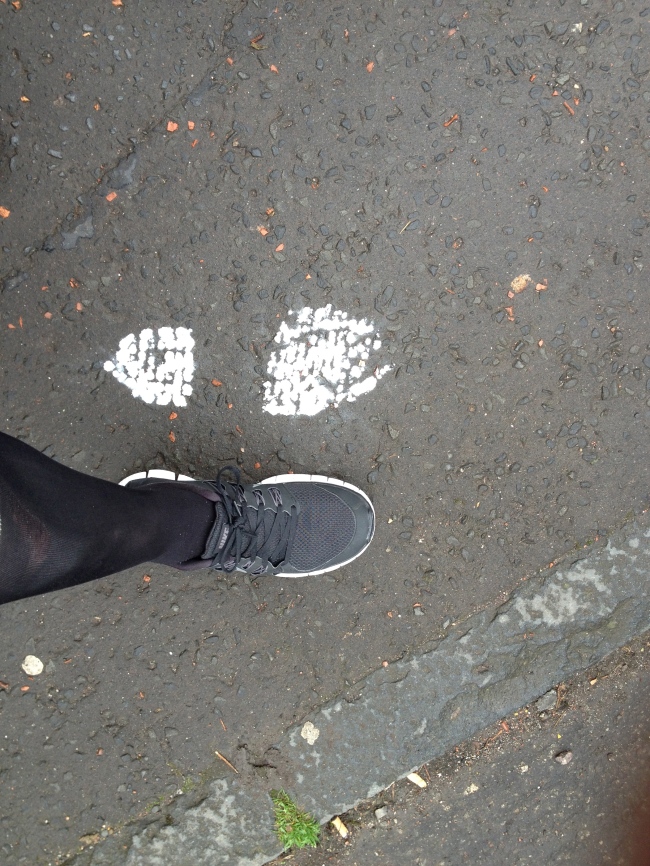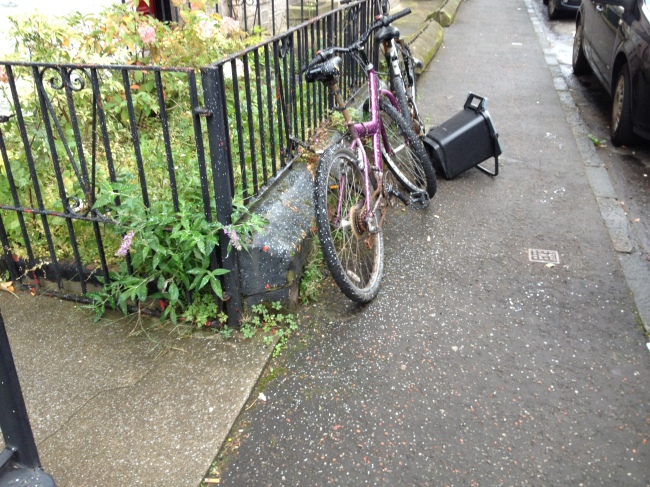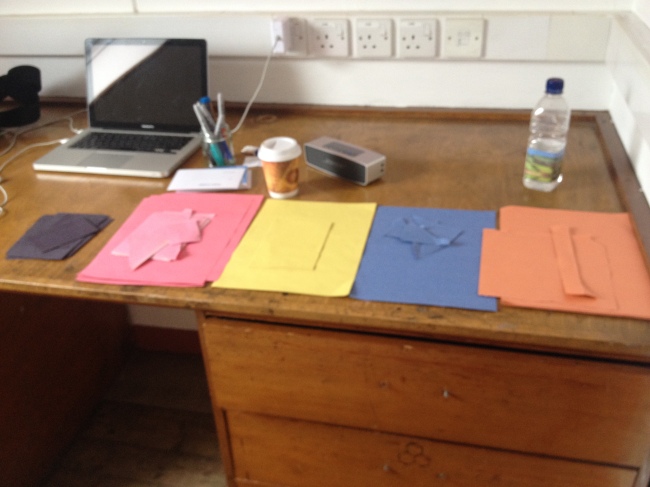Proposal for North
I am in the middle of marking ‘Writing for Performance’ submissions from my students at Glasgow University. The first thing they are asked to write is a proposal. It is quite a difficult thing to do in many ways and it made me think that I should write one for my project North at Summerhall.
The course tells students that a proposal is a clear and concise statement of
- A description of the project
- Your aims in undertaking the project
- Your proposed working methods
- The theoretical or critical frameworks relevant to your project and examples of practice, which relate to your project.
A brief description of the project
North will be a site-specific installation in the Small Animal Hospital (SAH) at Summerhall about the effects and affects of extreme light conditions in the North. I am taking ‘the north’ to be the world at and beyond the 60 degree parallel. It will combine a character-based story with an immersive experience of differently lit rooms. There will be no restrictions to the audience in how much time they can spend in the installation or how many times they can come back.
My Aims
I want to create a journey through different rooms of light to give an audience an embodied experience of how powerfully light affects our perception, senses and mood. I hope I can create the space for the audience to connect this experience with ideas and questions about light: what we know scientifically about light and how we understand it through language. These ideas I hope will lead the audience to make their own insights into how fundamentally light environments form who we are as a species, as individual people and communities.
I aim to connect the physical experience of the rooms of light with ideas about light through a story. This will be about a fictional character, an ex-keeper of a lighthouse in the Arctic Ocean, who is trying to understand light and his relationship to a ‘science-fictional’ character, an arctic warrior who has had the part of her brain that receives signals from light removed. This means that she does not need to sleep but experiences intense hallucinations for 2 hours every night. The idea for this is based on the very rare ‘Morvan’s Syndrome’.[1]
Some important practical questions I hope to answer at this stage of the development of this project are:
1) How does an audience practically chose to experience a ‘journey through light’ when they are free to travel through it as they wish? How long do they want to stay in each room? Do I need to think about seating?
2) Will audience members construct themselves in some way as co-creators of this story and/or world? If they do, how do they do that? Do they perhaps construct themselves as characters and/or as an ‘authorial eye’?
3) How does it feel to be offered a blacked out room to move through? Should I offer torches or candles or both? How should those be offered?
4) How can I make sure an audience is adequately supported in the journey so they are free to explore it without either being in any danger or feeling too much fear or uncertainty?
5) I think I want to make one room that is ‘horrific’ or scary. Is it possible to feel fear in a ‘good’ way in this context?
6) How might rooms of coloured light connect with a story about light environments? Could this be part of a creation of the hallucinations of the Arctic Warrior?
7) How will the piece be experienced by someone who is blind?
8) Should the installation contain live performance? If there is live performance should that be of the fictional characters and/or of ‘an attendant’ or ‘author’ character who can engage with the audience about the work itself.
Your proposed working methods
Development of text: I have spent two weeks in Shetland in June and December, the two most extreme light environment times of that place. In the first week I met with potential partners and collaborators: David Hazzlrigg, now Professor of Arctic and Marine biology at the Arctic University of Norway and then at Aberdeen University, the Shetland Arts team and the Lerwick based writer Jacqui Clarke. I also researched some of the history of Shetland and visited the most northerly place in the UK in Unst, from where I saw the Muckle Flucker lighthouse. I went to the museum in Unst and read some of the history of the Muckle Flucker and this led me to think about creating a story about a fictional lighthouse further north in the Arctic Ocean.
I returned in December and wrote the diary of the lighthouse keeper. I wrote this long hand into a diary as if I were that lighthouse keeper. This is a development of a practice I created as part of my doctorate in playwriting. In that research I wrote a series of plays by writing on and about a public bench for extended periods of time. I wrote for 24 hours of the day and night and then dramatized that text on a stage within 5 minutes walk of the bench.
In December I aimed to write again on a pubic bench for 24 hours in the same way. But I found it much harder than in the past. I do not know definitely why that was. Perhaps it was because I was writing for the SAH in Edinburgh and that distance between the place and the performance directed my writing towards fictionalizing this experience of long dark days in Lerwick. Also, perhaps I did not want to write for so long outside because it was so much odder to sit on a bench writing in a place with such a small population. There couldn’t have been more than 20 people living on the peninsular where I was staying. I felt much more exposed as a stranger behaving in a strange way, than I did on benches in cities. There were often moments when I was scared when writing in this way in cities, but I knew how to quickly become an anonymous part of the usual flow of people in a city. In the rural environment of the peninsular I realized that I would need to stay much longer and invest much more deeply in my personal relations with the people who lived there to feel comfortable sitting for very long periods of time in one place.[2]
During this time in December 2013 I read the books that Prof. Hazzelrigg recommended to me: The Rhythms of Life: The biological Clocks That Control the Daily Lives of Every Living Thing, byRussell Foster and Leon Kreitzman and Trawler, by Redmond O’Hanlon as well as his own publications on endocrinology. The other books that are feeding this process are Pale Fire by Vladimir Nabokov, Light by Scott Palmer and The Idea of North by Peter Davidson. I am also reading about the science of light.
Creating the journey through light in the SAH: I will be working with Katharine Williams. She will work with me for 3 days in the first week, when we will start to create a journey through different light environments. We have begun to talk about how we will do that and this proposal will also be part of how I communicate the project with her.
I will then record the lighthouse keeper’s text in the space. Katherine will come back for 2 days in the second week and I hope my mentor Stewart Laing will come and see the work so far in that second week of development. I will then plan the final two weeks of development. Finally, there will be an open work-in-progress for an invited and public audience on the 6th June 2014. I will then take part in a critical feedback process that will be organized by Summerhall probably on the 6th June. The outcomes from that feedback will form the basis of how I take the work on over the next two years with the Creative Scotland artist bursary.
Critical and Practice Context
This project builds directly on my practice-as-research doctorate, where I began to think critically about how societies use the cycles of light over days and seasons to construct what is ‘normal’.[3] So, I have ‘arrived’ in the North from a queer time and place and the work of queer theorists Sara Ahmed, Jon Binnie, Judith Butler, Michael Foucault and Eve Kosofsky Sedgwick.
My PhD was about playwriting for mainstream theatre venues and North is taking a turn towards the visual arts. Traditionally theatre imposes time constraints on the audience: There is a time when the show starts and finishes. I am interested in how removing these time constraints might affect how I write ‘a play’.
Janet Cardiff and George Bures Miller’s work is an important practical context for this aspect of the project. I am particularly inspired by Opera For A Small Room, which I saw at the Fruitmarket, Edinburgh in 2008.[4] It really impressed me how close this work came to being dramatic, even though there were no performers. I felt that I was almost a performer in the piece and that I was seeing the other people looking at the piece as either characters or actors in a drama. I felt Cardiff and Miller, in this and other installations in that exhibition, offer their audience stories through ‘found objects’ they have arranged in the rooms or spaces they have made. I wonder if in North I can use words, created as if they were ‘found words’ (diaries, scraps of CCTV recordings), like the apparently ‘found objects’ in the Cardiff and Miller installations, to create a space where the audience can be either a character or author in their own time.
I am also continuing to looking at visual artists who make light installations such as Olafur Eliasson, Gunda Foerster, Jen Lewin and James Turrell.

[1] Foster, Russell and Kreitzman, Leon, The Rhythms of Life: The biological Clocks That Control the Daily Lives of Every Living Thing, (Profile Books Ltd: London, 2005), p. 234
[2] I have an artist bursary now from Creative Scotland, which will enable me to do this both in Shetland and further north which I will do from 2014 – 2016.
[3] My thesis ‘Applying queer theory about time and place to playwriting’ can be found here http://theses.gla.ac.uk/3817/
[4] http://fruitmarket.co.uk/exhibitions/archive/cardiff-miller/
